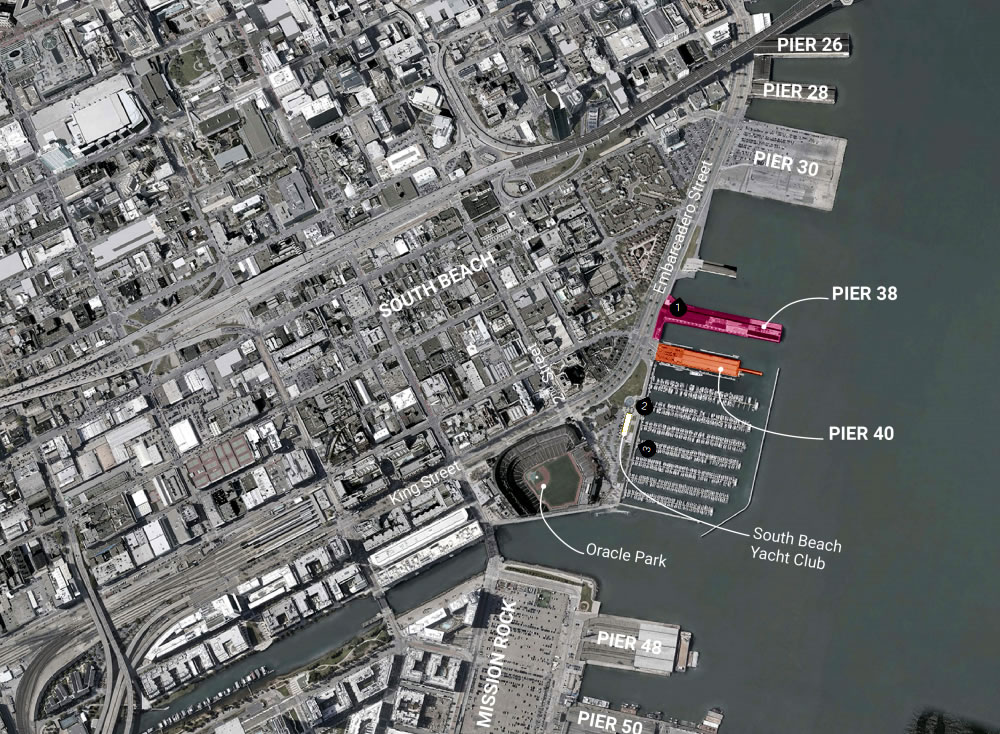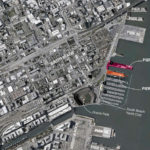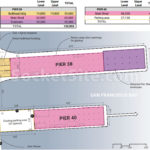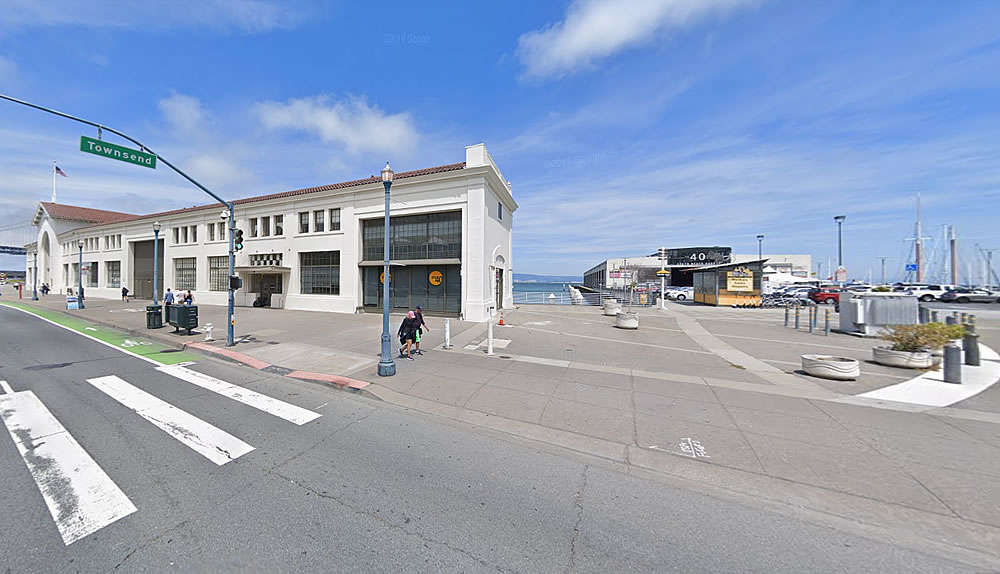The Port of San Francisco is now officially soliciting proposals from teams interested in redeveloping Piers 38 and 40 along the Embarcadero.
While plans for Pier 38 had been drawn nearly a decade ago, said plans were subsequently abandoned due to the poor seismic condition of San Francisco’s seawall (which runs directly under the bulkhead building of the pier) and resulted in the project being deemed “financially infeasible.”
In addition to seismic considerations, proposals for the two piers, which total over 200,000 square feet of space, will need to comply with Secretary of Interior’s Standards for the Embarcadero Historic District, which will include preserving the majority of the existing buildings’ volumes and character defining features. But a new structure could potentially be built on the 20,000 square foot parking lot portion of Pier 40 which fronts the Embarcadero.
While the Port is seeking a “vibrant, financially feasible, [and] mixed-use program for the piers,” keep in mind that neither residential nor hotel uses are (currently) allowed.
And yes, an RFP for the redevelopment of Piers 30-32, as well as Seawall Lot 330, upon which the Embarcadero Navigation Center was constructed, is in the works as well.




As I know nothing about piers, Is it even possible to build long lasting structures on these piers? What is supporting these piers anyway?
Yes, and it’s very expensive. (See the Exploratorium’s rehabilitation of P15, where existing pilings were encased in concrete) But really, how long does it need to last, with sea level rise due to bring the water up to the bottom of these structures by 2050? It’s madness that we are continuing to build along this shoreline, never mind on the other side of the seawall.
good ol wood piles from when they were originally built. Pier 30 where the Warrior once proposed is a different beast as somewhat newer pier was built around the original pier. So you had better structural support but even then it was going to be expensive to put a stadium on top of it
Kinda have to chuckle again, maybe the port thinks that property/land values/rents have gotten so high that somehow the expensive upgrades needed are now financially feasible. As phays noted, what it will take to put a lot of these piers back into a state of good repair & meet modern seismic codes is very expensive because the old wood pilings these piers as well as the structures have rotted and outlived their expected live.
But a bigger question, does anyone have an idea when and if some much needed work to the seawall will happen? Believe residents approved funding/taxes for initial engineering, design and start rebuilding. It was a big chunk of change but still well short of what would be needed if the entire sea wall is to be replaced. Seattle is replacing its seawall but it is a much smaller relative to what was built in San Fran.
The Port is hoping that whatever sucker developers “win” this RFP will also somehow foot the bill for the seawall. The Port is a daily example of gross incompetence. At this point SF is lucky to even have any piers left. Mother Nature will probably just finish the job within the next decade or so…
At what point do we just tear the piers down? They’re deteriorating, underused, expensive to fix, limited by law in their use, and they block the views. The Port hasn’t functioned as a port for decades and it’s not going to start ever again. Why not tear them down before they collapse?
See: The Likely Fate of San Francisco’s Prominent Piers 30-32
Exactly! If we continue to do nothing, the decision will be made for us. Why not just tear them down and open up the views?
Once again, see the calculus we outlined here.
People need to stop saying “vibrant” so much in this town.
Sea level rise is making all this nonsense moot in short order.
These RFPs — as innumerable RFPs issued by the Port before them — will result in no action as there as so many limitations on development that could actually underwrite the massive infrastructure work that needs to be done, not only to to save the piers, but mitigate against the rising of the bay waters.
What the entire waterfront needs is a comprehensive development approach (including wholesale revision of various outdated/counterproductive laws that limit financial feasibility) in order to both protect and preserve the SF shoreline. This piecemeal, pier-by-pier, approach is doomed to failure.
“Working” waterfront is worth keeping. Tug boat, marine salvage, oceanography, ship repair , boat building, fishing and similar uses, and developements that have not appeared yet, are all uses that can not be moved to other areas. The waterfront is a unique asset in that sense and should be cultivated as such.